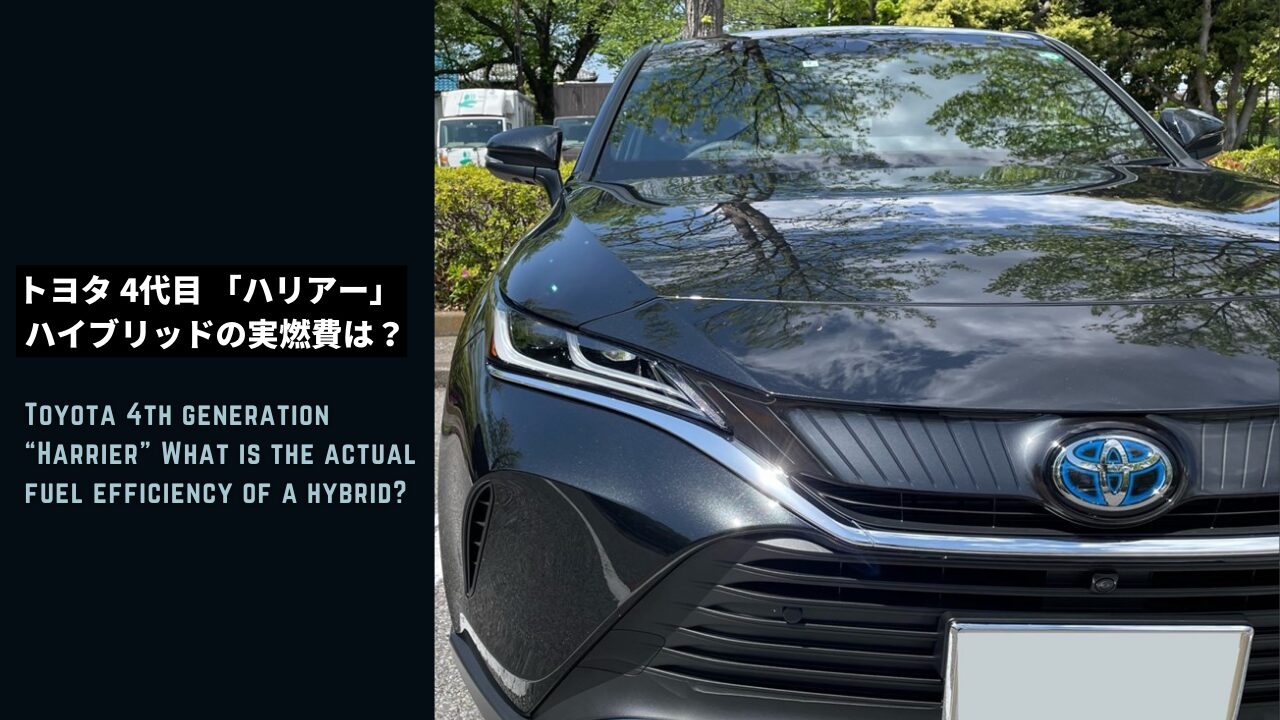
I am the owner of Toyota’s fourth-generation new Harrier, and I drive a hybrid (2WD) model. It has been exactly four years since I bought it, and I’m sure many people are wondering what the actual fuel economy of this hybrid model is. I have driven over 25,000 km so far, so I would like to tell you about the actual fuel economy.
Articles often read together
» Harrier New Model Information New!
» Harrier delivery information
» Harrier Discount Information New!
ADVERTISEMENT
ADVERTISEMENT
- What is the actual fuel economy of the fourth-generation Harrier hybrid model?
- Until the 4th generation Harrier Hybrid pays off
- About comfort
- My thoughts on comparing the new and old Harrier models
- Harrier specs
- What kind of car is the Harrier?
- New car price of Harrier
- Hybrid Model
- A word from the editorial department
What is the actual fuel economy of the fourth-generation Harrier hybrid model?
I’ve been using it for about four years, in both summer and winter, without worrying about the heating or air conditioning. I’ve actually driven it for over 25,000km, with about 30% on highways and 70% on regular roads. It’s possible to improve fuel efficiency with a hybrid by being careful about how you drive and by using driving methods specific to hybrids, but I drive it normally without thinking about anything.


The actual fuel economy of the fourth-generation Harrier was 16.7km/L. The catalog value for the hybrid vehicle (2WD) is WLCT mode fuel economy: 22.3km/L, so it can be said that there is not much difference. This is an excellent result.
I was also the owner of a 4th generation Prius 2WD early model, and my actual fuel economy was 23.0km/L. The catalog value was 37.2km/L in JC08 mode, so I was disappointed by the difference. (The difference comes from how you drive.) In other words, with my driving style, the difference with the Prius is only 6.3km/L. This shows that the fuel economy is astonishingly good.
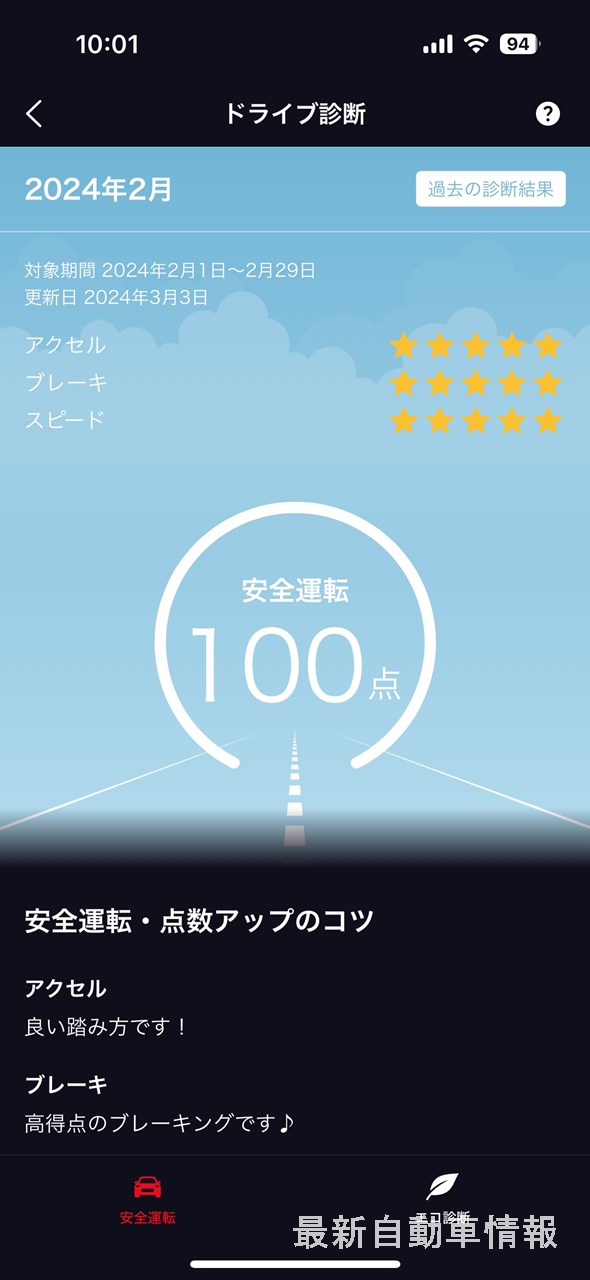
The smartphone app “My TOYOTA” can also be used to check driving diagnosis, but as you can see, the driver is not paying attention to the accelerator or driving in any special way.
ADVERTISEMENT
ADVERTISEMENT
Until the 4th generation Harrier Hybrid pays off
This time, I will talk about the Harrier, including calculations and impressions, to consider whether it is worth the money. When you consider fuel efficiency and price, it is a very difficult question.
When comparing the “G” grades of both the “Hybrid” and “Gasoline” models, the gasoline model is 3,529,000 yen and the hybrid model is 4,119,000 yen, for a difference of 590,000 yen. However, hybrid vehicles are eligible for a total of about 142,600 yen tax reductions, including an environmental performance tax of 86,600 yen, a weight tax of 49,200 yen, and a vehicle tax classification tax of 6,800 yen, so the actual difference is about 447,400 yen.
Information about car taxes is summarized in this article.
Here we will calculate the cost of gasoline, and examine how much driving it will cost to make up for the gasoline bill of about 447,400 yen . In reality, we will calculate based on the actual fuel consumption listed above.
- Fuel economy for gasoline vehicles (2WD) is calculated based on WLCT mode fuel economy: 15.4km/L (13.0km/L). Fuel economy for hybrid vehicles (2WD) is calculated based on WLCT mode fuel economy: 22.3km/L (17.0km/L).
Calculation of driving 10,000 km when gasoline price is 160 yen per liter
- Gasoline model 10,000km=123,077 yen
- Hybrid car 10,000km = 94,118 yen
Even if you drive 10,000km, the difference in fuel efficiency is only 28,959 yen, so even if you drive 100,000km, the difference is only 289,590 yen. In other words, you have to drive about 200,000km to make up for the price difference of the hybrid model. If you normally sell a new car after about 5 years or have a mileage of about 100,000km, choosing a hybrid car will result in a loss of 157,810 yen.
Furthermore, in the case of the Harrier, there is no difference in the exterior design between the hybrid model and the gasoline model, so there is no sense of superiority in appearance. For this reason, it is not something you can easily choose just because it is a hybrid car.
ADVERTISEMENT
ADVERTISEMENT
About comfort
So far, we have been talking about the price, but this time we would like to touch on comfort as well. The “Inline 4-cylinder 2.0L direct injection engine + Direct Shift-CVT” model is attractive in terms of price, but not so much in terms of comfort. I have driven the 2.0L gasoline models of the third-generation “Harrier” and the fourth-generation “RAV4”, and I felt that they were slow to start. The torque is insufficient for the weight of the car, and even if the Direct Shift-CVT improves it somewhat, it will still feel slow.
On the other hand, the hybrid system of “inline 4-cylinder 2.5L direct injection engine + motor” is Toyota’s specialty. Since the start is done only by the motor, you can expect strong torque and smooth acceleration. The overseas model “Venza” also uses only this hybrid engine, and it is highly rated overseas. Furthermore, when using “radar cruise control”, comfort will be improved because the electronic control and hybrid are compatible. If you value comfort performance, we recommend a hybrid car.
ADVERTISEMENT
ADVERTISEMENT
My thoughts on comparing the new and old Harrier models
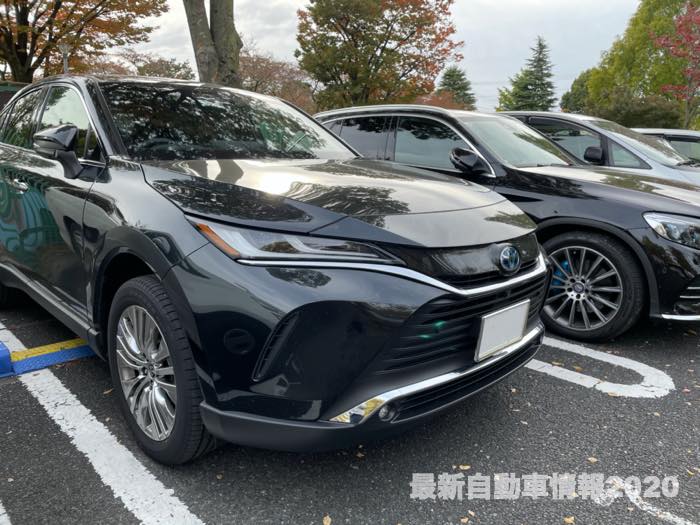
The new Harrier adopts the newly developed “TNGA-K platform,” which has increased the body rigidity. In addition, it is equipped with the in-line 4-cylinder 2.0L direct injection engine “Dynamic Force Engine” that achieves a maximum thermal efficiency of over 40%, enabling a higher quality and more comfortable driving experience than the previous Harrier.

The new model has expanded the options with the addition of a 2WD hybrid model. For those who don’t need a 4WD, this is a great opportunity to drive a hybrid car at a reasonable price.
ADVERTISEMENT
ADVERTISEMENT
Exterior
In terms of the exterior, when comparing the “S” and “G” grades, you’ll want to choose the “G” when you consider the appearance and convenient features such as the “chrome plating on the front and rear” and “LED daytime running lights.”
The next-generation Toyota Safety Sense has more detection accuracy and items than the previous model, and safety technology has been greatly improved. This significantly reduces the burden on the driver. It is not that the old model is outdated, but since the evolution of three years is reflected as it is, it is worth considering switching from the old model.
The new Harrier is available in grades “S”, “G”, “G “Leather Package”, “Z” and “Z “Leather Package”, as well as hybrid and gasoline vehicles. When considering the total cost, gasoline vehicles are cheaper, but if you want a comfortable ride, you should also consider the hybrid.
ADVERTISEMENT
ADVERTISEMENT
interior
The interior of the new Harrier comes standard with luxury car features such as a power tailgate, illuminated entry system, and digital inner mirror. Considering these features, you’ll probably want to choose the G. With its full complement of advanced technology and safety features, there’s no problem choosing the G for a car that costs over 3 million yen, even if it’s only 300,000 yen more.
The old model also has a sense of luxury, but the new model has a 12.3-inch touch screen, JBL premium sound, and a head-up display, making it even more advanced and comfortable. The price is about 300,000 yen higher, but it is well worth it.
For those who want to fully experience the new equipment, we recommend the Z, which comes equipped with a 12.3-inch T-Connect SD navigation system, hands-free power tailgate, and color head-up display.
In conclusion, the most recommended new Harrier is the hybrid car “Z”. If you have a budget, consider the “Hybrid Car” “Z “Leather Package”.
ADVERTISEMENT
ADVERTISEMENT
Harrier specs
| spec | New Harrier | |||
|---|---|---|---|---|
| full length | 4,740mm | |||
| Overall width | 1,855mm | |||
| Height | 1,660mm | |||
| Wheelbase |
2,690mm | |||
| engine | 2.5L inline 4-cylinder direct injection engine “Dynamic Force Engine” + motor |
2.0L inline 4-cylinder direct injection engine “Dynamic Force Engine” |
||
| Maximum power | 131kW (178hp) / 5,700rpm |
126kW (171hp) / 6,600rpm |
||
| Maximum torque | 221Nm (22.5kgm) / 3,600-5,200rpm |
207Nm (21.1kgf・m) / 4,800rpm |
||
| Front motor maximum output |
88kw (120ps) | – | ||
| Front motor maximum torque |
202Nm (20.6kgm) | – | ||
| Rear motor maximum output |
– | 40kW (54ps) | – | |
| Rear motor maximum torque |
– | 121Nm (12.3kgfm) | – | |
| System maximum output |
160kW (218ps) |
163kW (222ps) |
– | |
transmission |
Electric variable speed transmission |
Direct Shift- CVT |
||
| Drive system | 2WD | E-Four (4WD) |
2WD | 4WD |
| Vehicle weight | 1,710kg | 1,770kg | 1,620kg | 1,680kg |
| Minimum turning radius |
5.5m to 5.7m | |||
| JC08 mode fuel economy |
26.4~27.4km/L | 26.3km/L | – | – |
| WLCT mode fuel consumption |
22.3km/L | 21.6km/L | 15.4km/L | 14.7km/L |
| tire size | 225/55R19 235/55R18 225/65R17 |
|||
| Passenger capacity | Five people | |||
ADVERTISEMENT
ADVERTISEMENT
What kind of car is the Harrier?
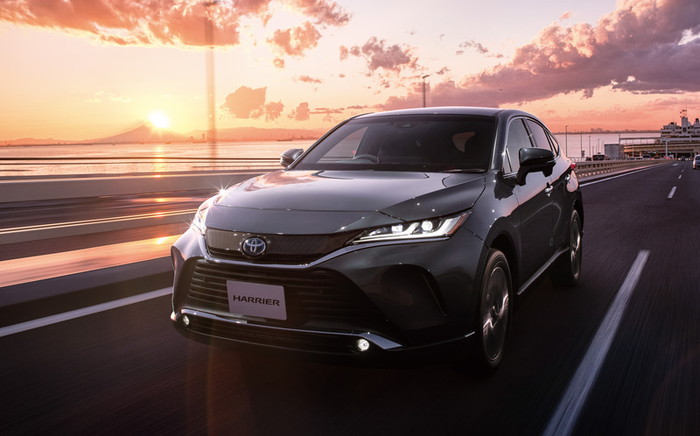
Toyota Harrier
The new Harrier’s platform is the same TNGA (Toyota New Global Architecture) “TNGA-K platform” as the Camry and RAV4, and with a “lower center of gravity” and “1.78 times increased body rigidity”, the overall length has increased by 15 mm and the overall width by 20 mm compared to the previous model. The overall height has been lowered by 30 mm and the wheelbase has been extended by 30 mm. This change has resulted in a low and wide style. On the exterior, the Toyota emblem has been adopted, and the previous Marsh Harrier emblem has been abolished.
The “Z” grade also comes with a genuine leather package. New equipment such as a photochromic glass moonroof and front and rear digital inner mirrors with dashcams are also worth checking out.
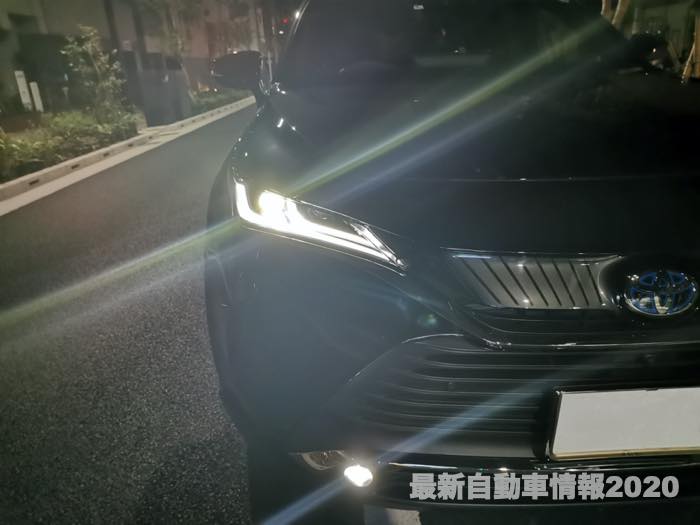

The current Harrier’s flowing turn signals are not adopted, and the “Moroccan hawk” emblem that was adopted in previous Harriers has been abolished and a new “Toyota emblem” is adopted. The shape of the headlights is sharper, and two L-shaped, DRL (daytime running light) “signature lamps” are adopted to emphasize individuality and advanced technology. “LED headlights (adaptive high beam system [AHS])” are adopted. A single letter design is adopted for the rear combination lamp, and it features an elegant and bold appearance.
The navigation display has been updated to 12.5 inches, and a new brown interior color has been added. In addition, a digital inner mirror that can record images in the front and rear directions has also been adopted. An “electric parking brake & hold” is adopted around the shift knob. The aluminum wheels are 18 inches for the “G” grade and 19 inches for the “Z” grade.

A minor change in 2022 saw the addition of the Harrier PHEV, the adoption of a 12.3-inch TFT full LCD digital meter , and the installation of the latest enhanced preventive safety package, “Toyota Safety Sense,” which includes “low-speed acceleration suppression function,” “detection of oncoming vehicles and pedestrians when turning right at intersections,” and “emergency steering avoidance support function.”
New car price of Harrier
The grade system has also been revamped, with three grades, “S”, “G” and “Z”, replacing the previous “ELEGANCE”, “PREMIUM” and “PROGRESS”.
Gasoline engine model
| model | engine | transmission |
Drive system |
Price (10%) |
|---|---|---|---|---|
| Z “Leather Package” |
In-line 4-cylinder 2.0L direct injection engine “Dynamic Force Engine” |
Direct Shift-CVT |
2WD (FF) | 4,338,000 yen |
| 4WD | 4,538,000 yen | |||
| Z | 2WD (FF) | 4,038,000 yen | ||
| 4WD | 4,238,000 yen | |||
| G | 2WD (FF) | 3,529,000 yen | ||
| 4WD | 3,729,000 yen | |||
| S | 2WD (FF) | 3,128,000 yen | ||
| 4WD | 3,328,000 yen |
Hybrid Model
The previous Harrier hybrid model was priced between 3,580,000 and 5,040,000 yen, but the new model has a price difference of 3,718,000 to 5,148,000 yen.
| model | engine | transmission |
Drive system |
Price (10%) |
|---|---|---|---|---|
| Z “Leather Package” |
Inline 4-cylinder 2.5L direct injection engine “Dynamic Force Engine” + motor |
Electric variable speed transmission |
2WD (FF) | 4,928,000 yen |
| 4WD (E-Four) | 5,148,000 yen | |||
| Z | 2WD (FF) | 4,628,000 yen | ||
| 4WD (E-Four) | 4,848,000 yen | |||
| G | 2WD (FF) | 4,119,000 yen | ||
| 4WD (E-Four) | 4,339,000 yen | |||
| S | 2WD (FF) | 3,718,000 yen | ||
| 4WD (E-Four) | 3,938,000 yen |
Plug-in Hybrid
| model | engine | transmission |
Drive system |
Price (10%) |
|---|---|---|---|---|
| Z | Inline 4-cylinder 2.5L direct injection engine “Dynamic Force Engine” + motor (PHEV) |
Electric variable speed transmission |
4WD (E-Four) | 6,200,000 yen |
A word from the editorial department
The Harrier looks good and has an impeccable fuel economy of 16.7km/L . It also has a high resale value, making it a more economical car than it looks.
Recommended articles for Harrier
- I’ve summarized the good points of switching to the Toyota 3rd generation Harrier (petrol) and 4th generation Harrier (HV)
- Toyota’s new Harrier 4th generation, fully redesigned, adopts TNGA, released on June 17, 2020
- Toyota RAV4 vs Harrier Test Drive Impressions Review Comprehensive Comparison
- Summary of disappointing points about the new Toyota 4th generation Harrier after purchase
- New Harrier minor change to be released in March 2025! Exterior changes and added features!
Toyota News Release
https://global.toyota/jp/newsroom/toyota/32186273.html
Toyota
Toyota Harrier
